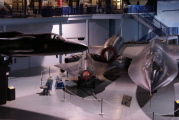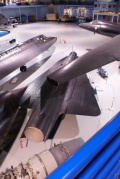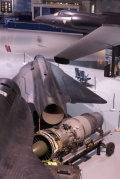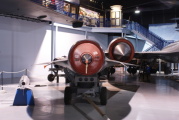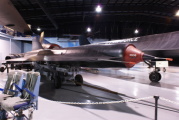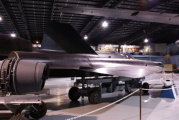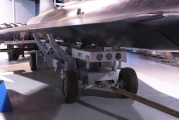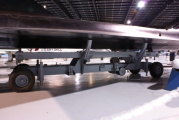Return to Museum of Aviation
D-21
Displayed next to the SR-71 is a D-21 "Tagboard" reconnaissance drone. The drone was to be expendable: It was to fly over enemy territory at Mach 3 to gather intelligence, fly back to friendly territory, jettison its film package, and then crash. The D-21 was equipped with Marquardt RJ43-MA20S-4 ramjet, initially designed for the Bomarc surface to air missile.
As part of agreement reached with the Soviet Union to secure the release of Gary Powers after his U-2 was shot down, the U.S. agreed to cease manned reconnaissance overflights. Since only "manned" overflights were banned, there was interest in unmanned overflights (since intelligence satellites were still several years from operation).
One concept which entered production and had a short operational lifespan was the D-21 drone. Initially developed to be carried on the back of and launched at Mach 3 from an M-21 aircraft (a slightly modified A-12 "mothership" built specifically to launch the D-21; the "M" and "D" stand for "mother" and "daughter"), an accident occurred on the fourth test flight which resulted in the destruction of both the M-21 and D-21 and the loss of one M-21 crewman.
The D-21's ramjet could only be started at high speeds, so the program was revised to equip the D-21 with a solid-fueled booster and launch it from the wing of a B-52, much like an X-15. The B-52 test program was plagued with failures, but eventually had enough successful test flights to warrant some operational missions. There were four such missions, all over China, and all ending in failure.
The program was cancelled in 1971 due to its poor performance and the improvement in reconnaissance satellites.
Return to Museum of Aviation




